Art World
Be Honest With Collectors (and Take Naps): 13 Habits of Highly Productive Art Dealers
It's a notoriously difficult time to run a gallery. Here is how some dealers are making it work.
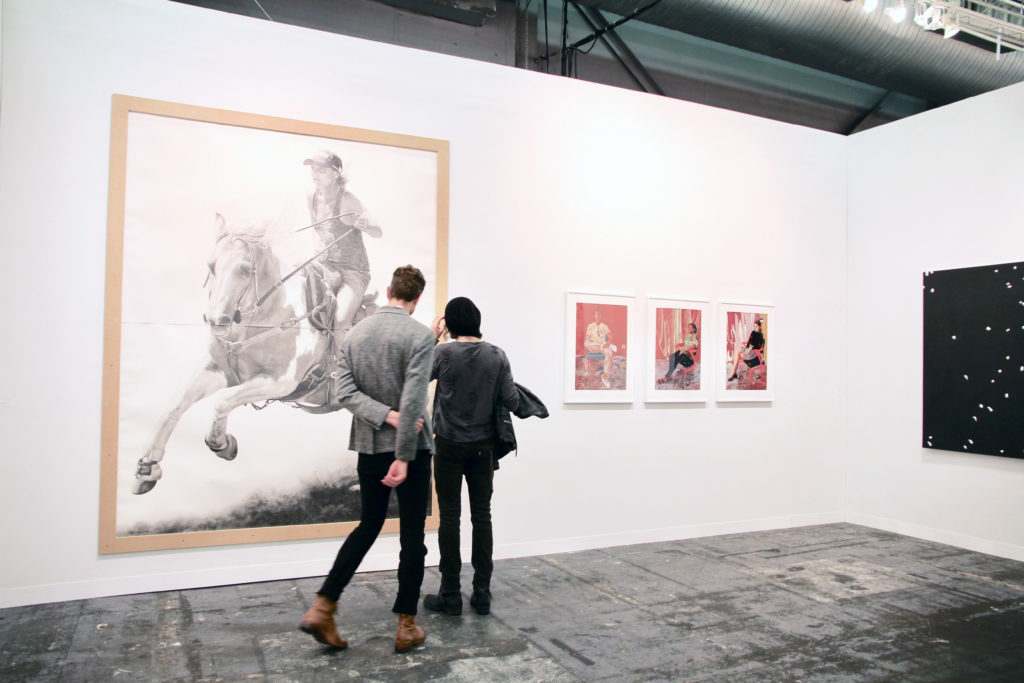
It's a notoriously difficult time to run a gallery. Here is how some dealers are making it work.

Margaret Carrigan

With rising rents and soaring art fair costs, it’s hard to imagine how dealers survive—much less thrive—in the current economic climate. But there are many who do, of course, so we asked nine of the hardest-working art dealers we know about the work routines and rituals that keep their careers on track.
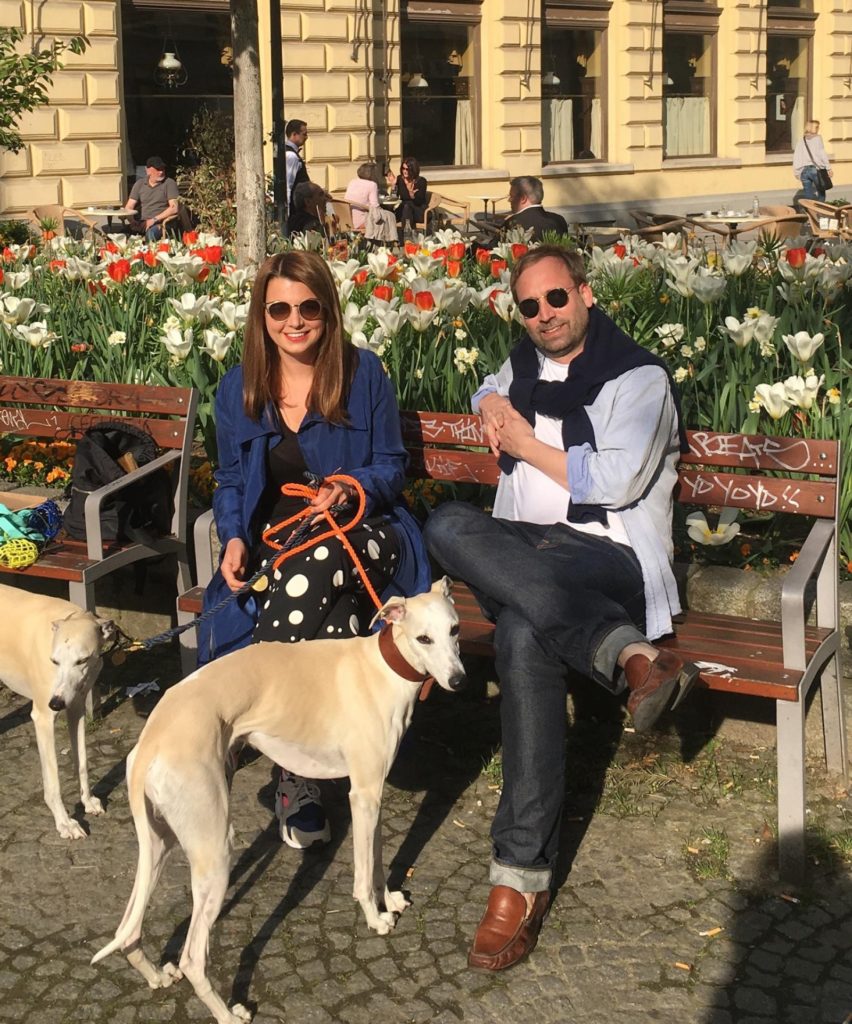
Laura Windhager of Vienna’s Gianni Manhattan gallery with Oliver Croy. Image: @giannimanhattan via Instagram.
Many art galleries have entryway desks, but that doesn’t mean dealers should be chained to them. “I hate chairs! I work best when I’m lying on the ground,” says Liz Caballero of Bogota’s Sketch Gallery, which was one of the first spaces to open in the city’s growing arts district, San Felipe. “I think being and feeling grounded really has so many benefits for my state of mind and ability to focus.”
Laura Windhager of Vienna’s Gianni Manhattan gallery finds working from cafés easier when she needs to finish texts or fill out lengthy applications. “There is this great tradition of sitting and writing or reading in coffee houses here. You can linger for hours in those old, mid-century cafés like Sperl or Kafka with one drink and just write.”
Catching up today with Nicole Berry who has now assumed the role of Executive Director of The Armory Show.
Posted by Sara Kay Gallery on Thursday, November 9, 2017
Windhager is quick to note that there’s a limit to her working hours, even if she can work from anywhere. She’s currently writing her Ph.D. dissertation on “unproductivity” and one aspect of her research is related to “the capitalization of rest,” she says. “I am very aware of my own tendency to exploit myself and overwork, and I try to be very protective of my right—and my artists’ right—to leisure and recovery.”
Windhager explains that inevitably there are exceptions to the rule, such as art fairs or the days leading up to an opening, where extra hours and late nights are unavoidable, but she tries to “stay sane” by keeping evenings free for her partner and friends.
Sara Kay, who recently launched her own eponymous gallery on New York’s Lower East Side after dealing art independently for several years and, previously, directing London’s White Cube gallery, agrees that taking time off is a must. “Like many New Yorkers, I used to wear my workaholic status like a badge of honor, and that worked well for a period of time,” she says. “Today, investing in my personal life is equally as important as investing in my career. Sometimes I have to say to myself, ‘You’ve done well, give yourself a little break.’”

Pro Tip: Take a Walk!
With frantic show openings, long fair days, messy shipping logistics, and collectors haggling to get dealers down, sometimes the best way to release steam is a simple walk, many say.
“My partner and I live on the outskirts of Vienna, very close to the vineyards and hills surrounding the city, and we have two dogs,” says Windhager. “If I am really overwhelmed, I turn off my phone and take them for a stroll through the woods. I find walking is the best way to clear my thoughts and regain focus.”
For others, a short stroll can suffice. “I like to take the time to walk through the gallery,” says Thorsten Albertz of Chelsea’s Albertz Benda gallery in New York. “It reminds me of why I do what I do—and I get to eavesdrop on visitors’ conversations.”
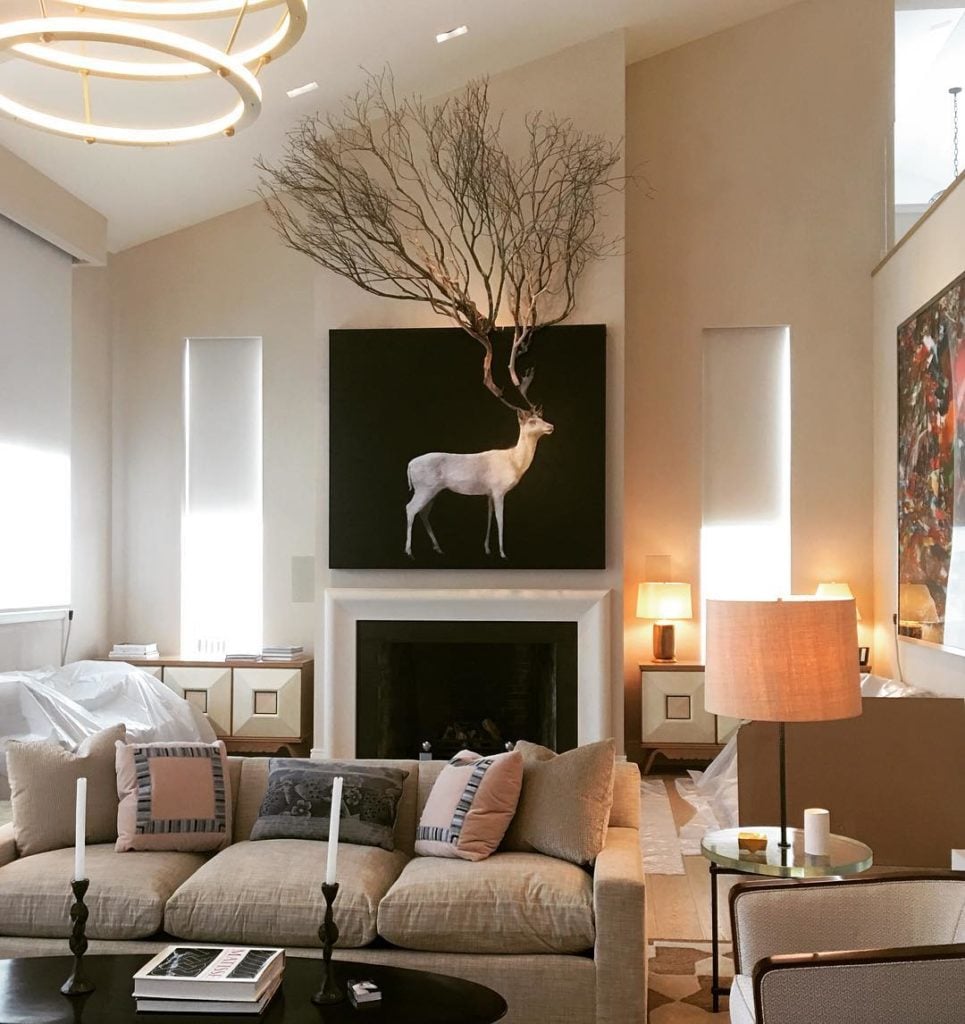
Photo of in situ Todd Murphy, @marcstrausgallery
#mscollectorshomes via Instagram.
We’ve entered the age of the share-economy, and there’s no better way to share your wares than on social media. For Ken Tan, partner and director at Marc Straus gallery in New York, Instagram and Facebook make for interesting—and more convincing—showrooms.
“I run a series on Instagram called #mscollectorhomes to showcase artworks of our artists in their new homes,” he says, explaining that it makes both the collector and the artist proud, and gives new life to the artwork. “It’s one thing to look at art in a pristine gallery and another to see it hang above a bed.”
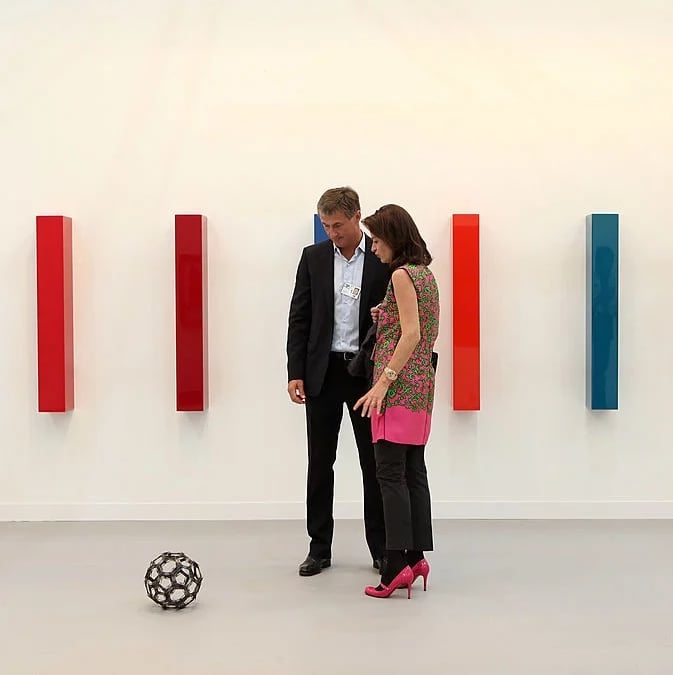
Advisers help navigate complex acquisition processes for collectors. Photo: Oli Scarff/Getty Images.
Even though collectors are increasingly willing to conduct sales online—or even via Instagram DMs—many gallerists say it’s still beneficial to log in IRL time together. Susanne Vielmetter, who’s been running her Culver City-based space Susanne Vielmetter Los Angeles Projects for nearly two decades, says that in order to provide great customer service, you have to connect with a collector personally.
“Nothing can replace face-to-face interaction,” she says. “We strive to make [a collector’s] visit to the gallery or to our booth an experience, where they leave inspired, enlightened, and hopefully having had a great time.”

Image courtesy of Evernote and Moleskine.
When schedules get frenzied before a big show, it pays to have a pen and paper handy. Caballero, who generally has a Moleskine notebook on hand for jotting thoughts down, also uses the Evernote app on the go. “Additionally, my team has a group Whatsapp where we are constantly updating one another on completed tasks so that everyone stays on the same page.”
When a busy opening brings in new collectors, Tan says he’s still a fan of the classic gallery guestbook for looking up names. The log at Marc Straus gallery even has boxes labeled for artists, collectors, curators, and press that visitors can tick if they wish to be further identified.
“After I meet someone, I have the habit of immediately scribbling down as many details as I can remember: what they were wearing, where their kids go to school,” Tan says. “Taking notes of all kinds generally really helps me organize my thoughts.”

Image © Google 2017.
It pays to be prepared. “When you’re running a gallery, you never know if it will be a good month or a bad month, sales-wise,” says Lucinda Bellm of London’s LAMB gallery. While she finds this extremely challenging, she counters any trepidation by budgeting well ahead of time for big expenditures. “I believe in being extremely organized months in advance to be able to balance the international art fairs, so I have a little room for mistakes.” This buffer period ultimately saves her money when it comes to travel and logistical snags when they crop up.
Vielmetter is keen on saving time, which is why she says she is “ridiculously anal” about organization. “It’s to the point that it’s important to me how our file drawers are labeled,” she says. “I expect my staff to pay the same attention to being organized as well, which is why we can spend our time on the important things rather than figuring out where the scissors are.”
Tan, meanwhile, swears by the entire Google software suite. ”I use a combination of Google Docs for longer notes and Google Keep for quick to-dos. I combine my Sheets with the Yet Another Mail Merge plugin for effective email marketing.”
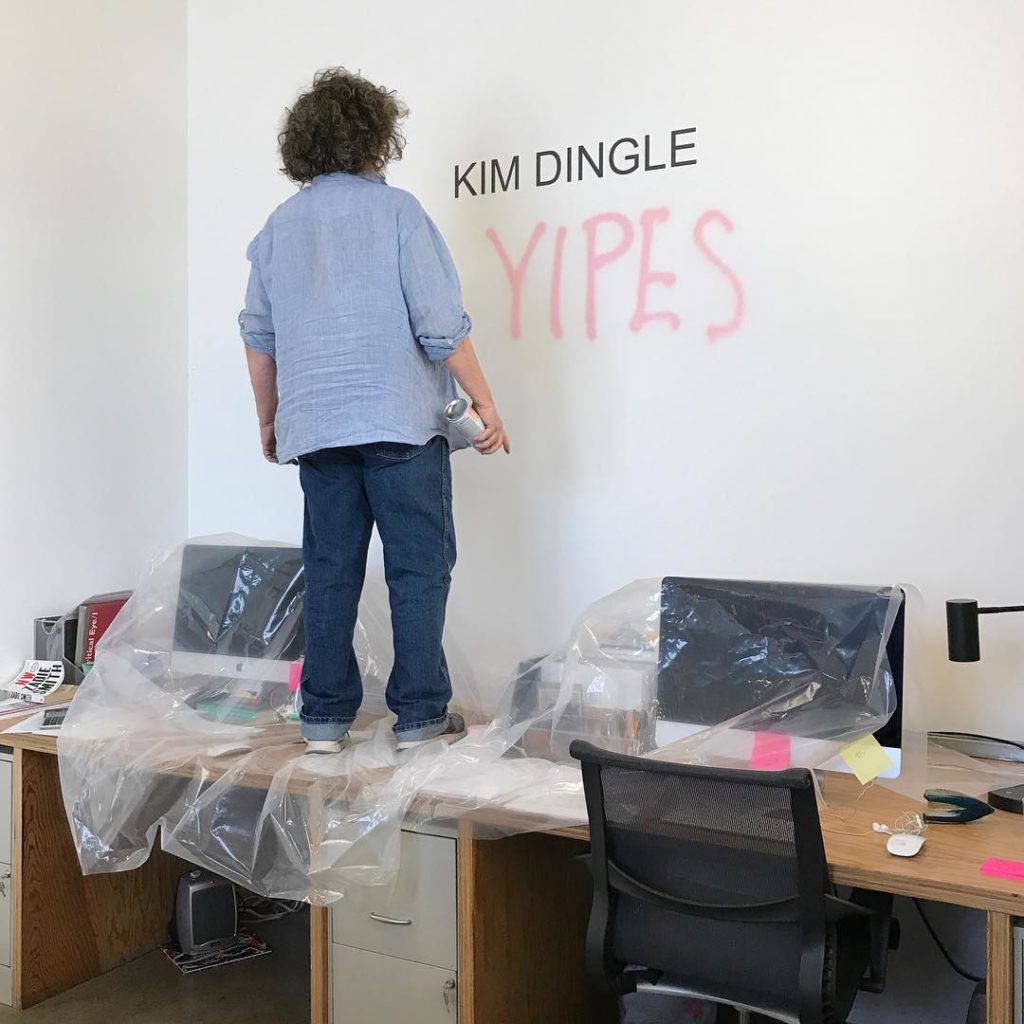
Letting her artists indulge their creative spirits. Kim Dingle @vielmettergallery.
Discipline might be a virtue when it comes to keeping a gallery in order, but Vielmetter says that every dealer needs to know when to soften up a bit, especially when it comes to taking care of her artists.
“Artists are creative, and creativity can be unruly,” she says. Vielmetter notes that many of the artists she works with have persisted in their pursuits, often for decades, with little or no recognition for their work. “I feel honored to be in a position to help them in building their career, and this is attitude helps us getting things done together productively.”
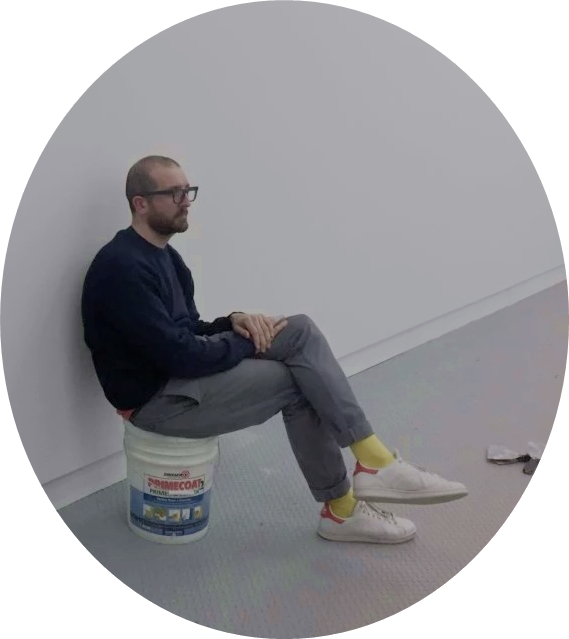
David Hoyland of Seventeen Gallery.
When it comes to working with collectors, brutal honesty is what David Hoyland of London’s Seventeen Gallery swears by—even if it means missing out on a sale. “I’ll tell a collector if I don’t think they should buy something, or if it doesn’t fit with their collection, or if I don’t think it’s the best work by the artist,” he says. “I think they appreciate that. It means that I’m really invested in what they want, not just what I want.”
Tan agrees, noting that he’s even gone so far as recommending other dealer’s shows. “It goes a long way when you can identify your client’s interests outside of your gallery’s artists.”

Those that bathe together, stay together. Joel Mesler (center) with the artist Rashid Johnson (right) and Gagosian’s Adam Cohen, courtesy of Joel Mesler.
A successful dealer knows not only what his clients are interested in, but also his artists. Hoyland says he’ll go to galleries with his artists often, to better understand what’s shaping their ideas. “I want to see what they’re seeing, what’s inspiring them—and what’s not,” he says. “They really keep me on top of what’s going on in the art world.”
For Windhager, working with artists on projects before signing a contract is key to getting to know them—and ultimately establishing a long-lasting relationship. “Gianni Manhattan is basically just me, so the working dynamic is very intimate and it would be ignorant, and even harmful, to ignore the fact that we need to get along on a personal level.” She says this takes some intuitive work on her part: “Some artists want guidance and deadlines; others are very independent.”
Monique Meloche, who worked for Chicago gallery heavyweights Kavi Gupta and Rhona Hoffman before setting up her own space in the Windy City in 2000 says that learning how to talk to her artists effectively is the most important aspect of meeting their needs. “Everyone is unique and it takes some time to figure out the best modes of communication for each artist—which sometimes means calling instead of texting, or just phrasing questions differently.”

Toggle settings. Image courtesy of Apple.
It helps to know how to communicate effectively, but the best dealers also know when to keep mum. “I make it a rule to keep my phone in my bag during dinner, whether I’m at home or out for a work function,” says Meloche, who notes how that was particularly difficult recently: One of her artists, Amy Sherald, was just tapped to paint former First Lady Michelle Obama’s official portrait. “My phone was ringing off the hook for days!”
Hoyland set a switch-off time after finding himself constantly checking emails. “It’s hard when your artist is in LA or something and you need to talk to them—that means it can be almost midnight here in London when you can finally get a hold of them,” he says. His new self-imposed rule limits work-related emails and phone calls to between 9 a.m. and 9 p.m. GMT. “We’ll see how long it lasts, but so far so good.”
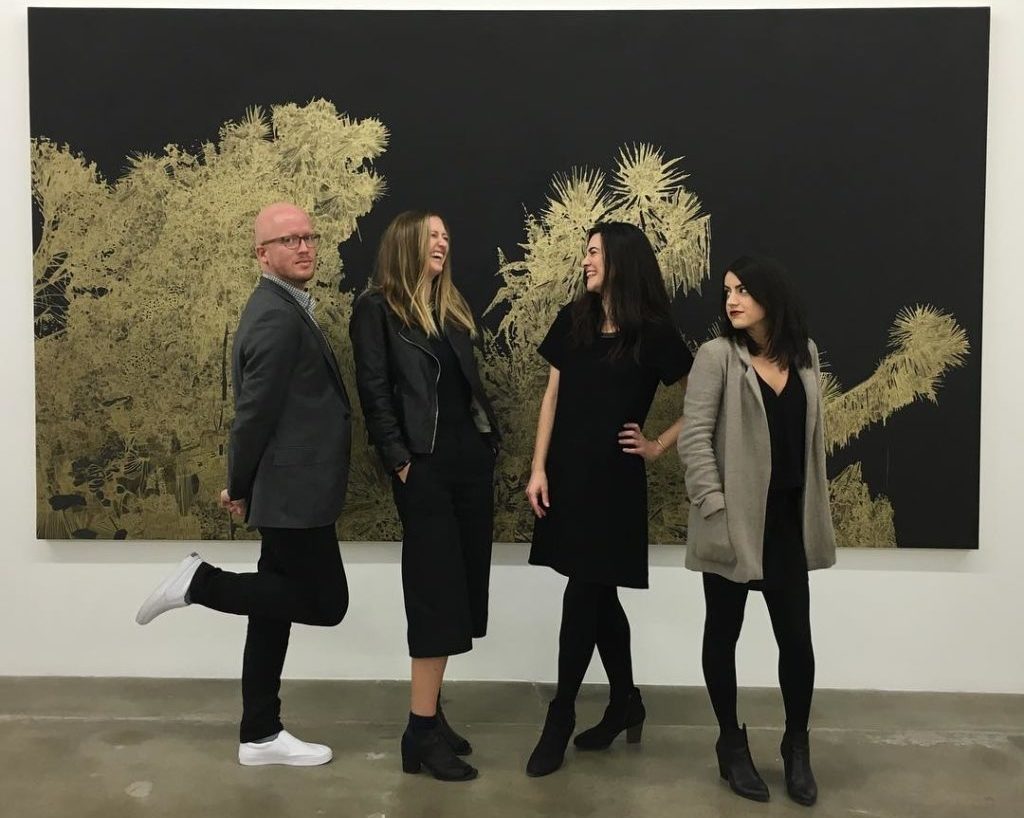
Susanne Vielmetter staff in LA @vielmettergallery via Instagram.
Pretty much every dealer emphasized how important it is to surround yourself with smart, capable people whom you trust. “I think staff is probably my biggest expense,” says Hoyland. “But it’s so worth it. I just flat out couldn’t do this without my gallery manager.”
“If I encounter a problem, I often discuss it with my staff and we find a good solution together,” says Vielmetter, “which is so helpful and makes us feel we are pulling together as a team.
Albertz agrees, saying that he’s grateful for having staff to bounce ideas off of. “I don’t know how colleagues do it who helm their business on their own,” he says. “I admire what and that they do.”

Images courtesy Frieze New York; © Essie.
One of the most stressful aspects of being an art dealer today, according to those we’ve interviewed, is participating in the non-stop schedule of international art fairs. Most gallerists said coping with the travel, the costs, and the tight schedules is something they’re still figuring out. In the meantime, several have a few tricks they fall back on.
Having a sense of humor and an upbeat aphorism helps when it feels like everything is going haywire, according to Caballero, who says “laughing and repeating my mantras is a must. “Oh, and my nails need to be perfect!”
Apparently, a good mani really can do a lot for a tired mind, since Caballero wasn’t the only dealer to swear by nail care. Meloche, too, makes sure her paws are primed before any big event: “’Good and Gold’ by Essie has been my go-to for almost five years and running.”